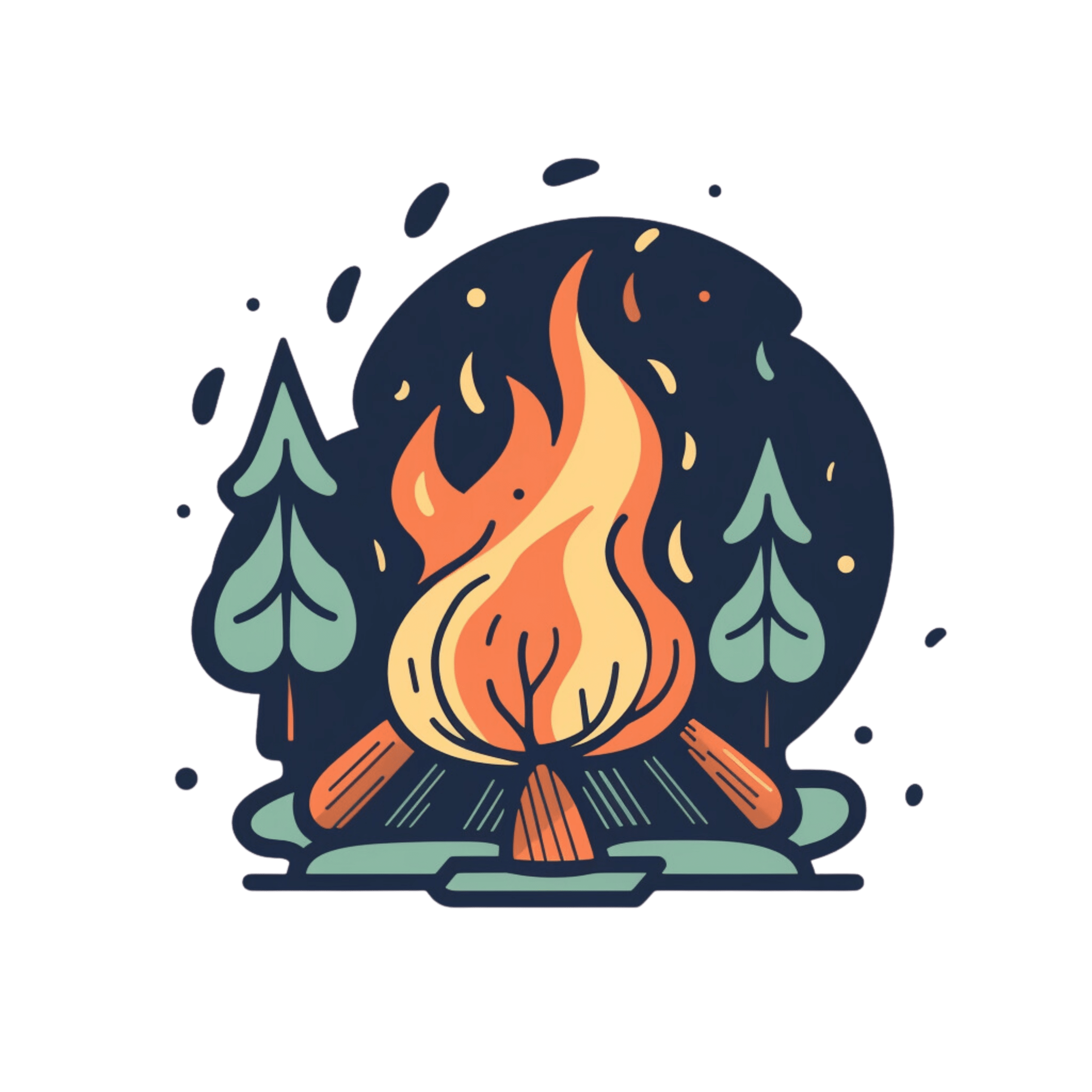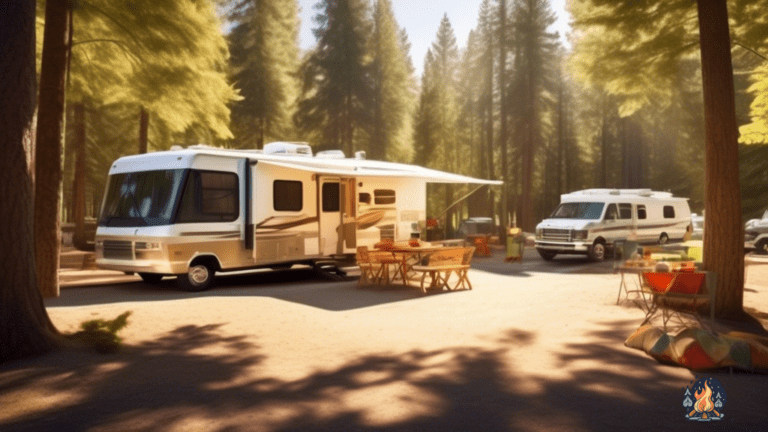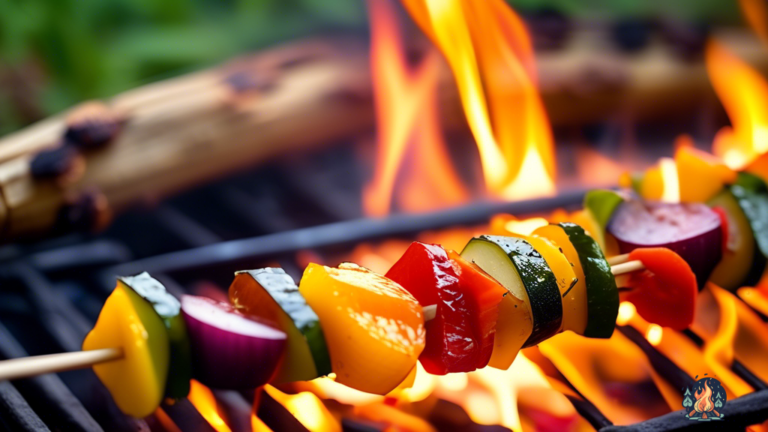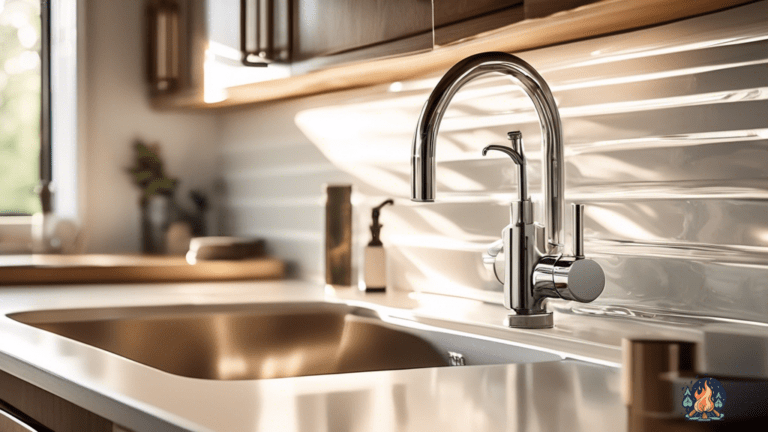Ensuring Campfire Cooking Safety
by Kevin Fairbanks • Updated: January 30, 2024
Cook delicious meals over a campfire without any worries! Learn essential tips for safe campfire cooking and enjoy worry-free outdoor culinary adventures. Click here for expert advice on campfire cooking safety.
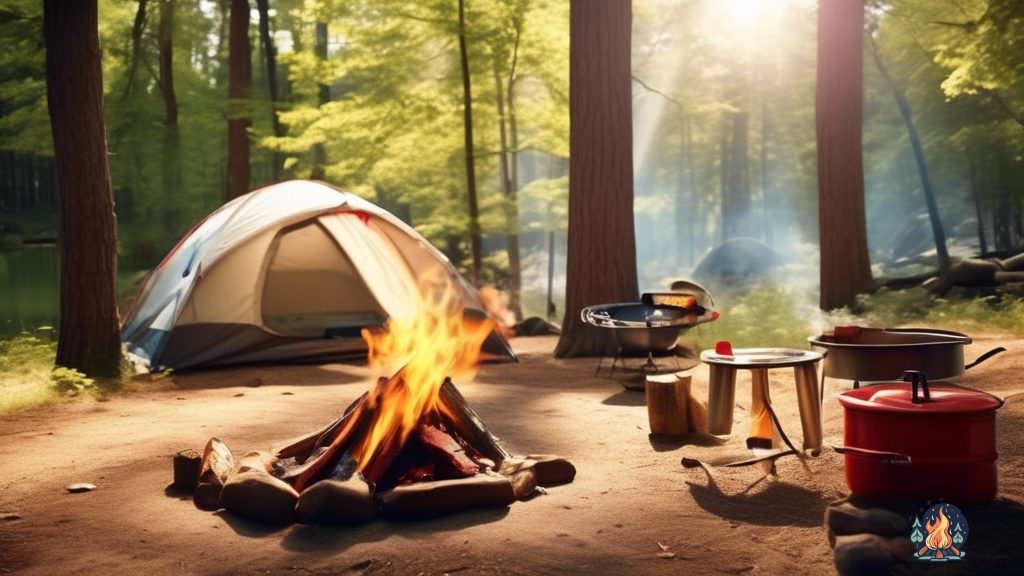
Are you ready to embark on a wilderness adventure and cook up some mouthwatering meals over a campfire? Well, before you start tossing sausages onto flaming logs like a lumberjack at a backyard barbecue, let’s make sure you’re equipped with all the knowledge you need to ensure campfire cooking safety.
Because let’s face it, the only thing less appetizing than burnt marshmallows is a trip to the emergency room.
Now, I know what you’re thinking. Campfire cooking safety? Isn’t that just a fancy way of saying "don’t set yourself on fire"? Well, my friend, it’s a bit more nuanced than that. It’s about choosing the right location for your fire, gathering firewood like a seasoned outdoorsman (or woman), and building a fire that won’t have Smokey the Bear shaking his head in disappointment.
So, grab your apron and spatula, and let’s dive into the world of campfire cooking safety like a salmon leaping upstream to its final destiny on your dinner plate.
Choosing a Safe Location for Your Campfire
When choosing a safe location for your campfire, it’s important to consider factors such as proximity to flammable objects and the availability of a fire ring.
Now, I know what you’re thinking, "But I want to roast my marshmallows right next to that beautiful, highly flammable tree!" Well, my friend, let me stop you right there. It’s best to keep your campfire at least 15 feet away from any flammable objects, including trees, bushes, and your neighbor’s tent. Trust me, you don’t want to be the reason someone’s camping trip turns into a "let’s evacuate the forest" kind of situation.
Speaking of safety, let’s talk about fire rings. These magical circles of metal are not just for decoration, my friend. They actually serve a purpose! You see, fire rings help contain the fire and prevent it from spreading uncontrollably.
So, if you stumble upon a campsite with a fire ring, consider yourself lucky. Embrace it. Love it. And most importantly, use it! Don’t be that person who decides to build their own fire pit right next to their nylon tent. That’s just asking for trouble, and probably a visit from Smokey Bear.
So, remember, when it comes to choosing a safe location for your campfire, keep your distance from flammable objects and embrace the fire ring. Your marshmallows will thank you.
Gathering and Preparing Firewood
Gathering and preparing firewood is essential for a successful camping cooking experience.
First things first, you’ve got to find a good spot to gather your wood. And no, the trunk of your car doesn’t count! Look for fallen branches and dead trees, but make sure they’re not too damp or you’ll end up with a sizzle instead of a crackle. Remember, you don’t want your firewood to be wetter than a soggy marshmallow.
Once you’ve located your wood, it’s time to get your hands dirty. Break out your trusty axe or saw and start chopping away. But be careful, you don’t want to end up like a beaver without a tail! Choose a sturdy branch to chop and make sure you have a clear area around you. You don’t want to accidentally send a piece of wood flying into your friend’s tent. Trust me, they won’t be too happy about that!
So, gather your wood like a squirrel gathers acorns, and get ready for some delicious campfire cooking!
Building and Maintaining a Proper Campfire
To build and maintain a proper campfire, you can start by selecting a suitable location.
Now, I know what you’re thinking. "But where should I build my campfire, oh wise and humorous writer?" Well, my friend, let me enlighten you.
Look for a spot that is away from any overhanging trees or low-hanging branches. You don’t want your perfectly cooked marshmallow to come with a side of tree sap! Also, make sure the area is clear of any dry grass or leaves that could catch fire faster than you can say "s’mores." Trust me, you don’t want your campfire turning into a blazing inferno. Unless, of course, you’re auditioning for a role in a movie about firefighters.
Once you’ve found the perfect location, it’s time to get your inner pyromaniac on and start building that campfire.
Gather some small sticks and twigs to use as kindling. Again, make sure they’re not wet or damp, unless you want your campfire to resemble a soggy marshmallow.
Next, arrange the kindling in a teepee shape, leaving enough space in the center for the fire to breathe.
Now, light that bad boy up and watch as the flames dance and crackle. But don’t get too carried away with your fire-building skills. Remember to keep a safe distance and never leave your campfire unattended. You don’t want your marshmallows to turn into charcoal briquettes. Unless, of course, you’re into that sort of thing. No judgment here!
Safe Cooking Practices and Equipment
Using proper cooking practices and equipment is crucial for a safe and enjoyable campfire cooking experience. Here are four tips to help you cook up a storm without any mishaps:
- Keep your eyes on the prize: It’s easy to get distracted by the beautiful scenery or the sound of wildlife while you’re cooking over a campfire. But remember, your food is not a mind reader. It won’t magically stop cooking itself if you’re not paying attention. So, resist the urge to wander off and keep a watchful eye on your meal. Trust me, burnt sausages are not a great souvenir from your camping trip.
- Don’t be afraid to accessorize: Just like you wouldn’t go to a fancy party without the right accessories, your campfire cooking needs some essential tools too. Invest in a sturdy set of long-handled tongs and a heat-resistant glove. These items will not only keep your hands safe from burns but also give you the confidence to flip those burgers like a pro. And hey, if you want to take it up a notch, throw in a chef’s hat. You’ll be the king or queen of the campfire kitchen!
- Practice proper knife skills: Picture this: you’re trying to chop up some vegetables for your campfire stir-fry, and suddenly, your knife slips and cuts your finger. Ouch! Not only does it ruin your cooking mojo, but it also puts a damper on the whole camping experience. So, make sure you have a sharp knife and a stable surface to work on. And remember, keep your fingers tucked away from the blade. No one wants a finger salad with their dinner!
- Be a fire extinguisher whisperer: One minute your campfire is roaring, and the next minute it’s threatening to turn into a blazing inferno. That’s where a fire extinguisher comes in handy. Before you even think about lighting up your campfire, make sure you have a fire extinguisher nearby and that you know how to use it. Trust me, it’s better to be safe than sorry. Plus, it’s a great conversation starter when your camping buddies ask, "Hey, why do you have a fire extinguisher at a campfire?"
Remember, cooking over a campfire can be a fun and rewarding experience. By following these tips, you’ll not only keep yourself safe, but you’ll also impress your fellow campers with your culinary skills. So, go ahead and get cooking. Your taste buds will thank you!
What are the Safety Measures for Campfire Cooking?
When preparing food over an open flame, campfire safety tips essential. Keep a bucket of water or sand nearby for emergencies. Ensure the cooking area is clear of any flammable materials. Use long utensils to avoid getting too close to the fire. Supervise the campfire at all times.
Extinguishing and Cleaning up Your Campfire
After you’ve enjoyed your delicious meal over the campfire, it’s important to properly extinguish and clean up your fire pit.
Now, I know what you’re thinking, "But I’m tired and full, can’t I just leave it for tomorrow?" Oh, my friend, if only it were that simple. Leaving a campfire unattended is like leaving your socks on the floor – it’s just asking for trouble.
So, let me give you the lowdown on how to put out your campfire properly, and trust me, it won’t take more effort than trying to find the TV remote.
First things first, you’ll need to gather some water. And no, a few drops from your water bottle won’t cut it. We’re talking about a good ol’ bucket of water here.
Slowly pour the water over the fire, making sure to cover all the embers. Think of it like a game of hide and seek – you want to find every last ember and douse it like it’s a mosquito in your tent.
Once you’ve poured enough water, use a stick to stir the ashes and embers around. This is called the marshmallow test – if anything is still glowing, it’s time for another round of water.
Finally, when you’re confident that the fire is well and truly out, you can pat yourself on the back and give yourself a well-deserved s’more. Just remember, a properly extinguished fire means a good night’s sleep and no unwanted surprises in the morning. Trust me, it’s worth the extra effort.
Frequently Asked Questions
Are there any specific rules or regulations regarding campfire cooking in certain areas?
Yes, there are specific rules and regulations in certain areas for campfire cooking. But let’s talk about something more exciting – like how to roast marshmallows without setting your hair on fire!
Can I use any type of cookware or utensils for campfire cooking?
Sure, you can use any cookware or utensils for campfire cooking, but it’s best to avoid flimsy materials or plastic handles that can melt. Trust me, you don’t want a melted spatula in your scrambled eggs.
Are there any precautions I should take when cooking with children around the campfire?
When cooking with kids near the campfire, always remember to make a game out of it. Teach them the u0026quot;Don’t Touch the Hot Stuffu0026quot; dance and watch as they hilariously avoid danger. Safety first, fun second!
How can I prevent accidents or injuries while cooking on a campfire?
To prevent accidents or injuries while cooking on a campfire, keep kids at a safe distance, use long utensils to avoid burns, and never leave the fire unattended. Remember, we want s’mores, not scorched marshmallows!
What are some alternative cooking methods I can use if I don’t want to cook directly over the campfire?
If you’re not feeling the whole u0026quot;cooking over an open flameu0026quot; vibe, fear not! You can embrace your inner gourmet camper by trying out alternatives like foil packet cooking or using a portable camping stove. Happy cooking!

Hi, I’m Kevin, a lifelong camping enthusiast and the voice behind Campfire Discoveries. From tent to RV to cabin camping, I’ve explored it all. Join me as we share stories and tips around the campfire, deepening our connection with the great outdoors.
Like This Article?
Share with your friends
Table of Contents
Latest Articles
Keep Reading
-
Mastering RV Campground Etiquette: Tips For Beginners
Learn how to master RV campground etiquette and have a stress-free camping experience! Our expert tips cover everything from parking to noise levels. Click now to become an RV campground pro!
-
Delicious Campfire Cooking Vegetarian Recipes
Unleash your inner chef with these scrumptious campfire cooking vegetarian recipes that will leave you craving for more! From hearty mains to irresistible desserts, get ready to elevate your camping experience. Try them out now and satisfy your taste buds like never before!
-
Maintaining Your RV Water System: Tips And Tricks
Keep your RV water system running smoothly with our expert tips and tricks for maintenance. Don’t miss out on our essential guide! Click now to learn more about RV Water System Maintenance.
